vision Care Blog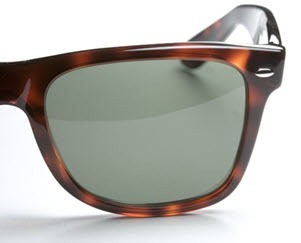
UV and the Eye Now that summer is here outdoor activities are on the rise. Make sure you have your sunglasses handy. You’ve heard the recommendation for UV blocking eyewear many times. But why? Ultraviolet light can lead to a variety of conditions affecting different parts of the eye and its surrounding structures. Some of these are serious, others are not. ● Eyelids: Chronic sun exposure can lead to malignant tumors of the eyelid. Some examples include basal cell carcinoma (most common), squamous cell carcinoma, and keratoacanthoma. Risk factors for basal cell and squamous cell carcinomas include age (more commonly in the elderly), fair skin complexion and chronic sun exposure. ● Conjunctiva: Examples of growths of the external eye include pingueculae and pterygiums. Unlike the malignant tumors of the eyelid, these lesions are not serious. They both result in collagen degenerative changes of the conjunctiva, which is a thin, clear, vascular layer that lies on top of the sclera- the white part of the eye. Although a pinguecula remains localized on the conjunctiva, a pterygium will extend onto the cornea. Both are believed to be caused by hot climates and UV exposure. ● Lens: UV damage is one of the risk factors that contributes to the development of a cataract. A cataract is when the lens is no longer clear. It changes to a yellow/ yellow-brown or develops opacities at different parts of the lens. ● Macula: Apart from other risk factors in the development of macular degeneration, UV exposure is one of the contributing sources. Macular degeneration results in blurred central vision, and end-stage is a central blindspot. Although central vision is affected in macular degeneration, peripheral vision is maintained. Ultraviolet radiation increases at higher altitude, during mid-day typically between 10am and 2pm, and during the summer and fall months. There are various forms of UV light- UVA, UVB and UVC. So then what are the best sunglasses to get?. UVC is absorbed by the ozone layer and UVA penetrates deeper into the eye than UVB, so sunglasses that block both UVA and UVB is the best choice as it pertains to blocking harmful rays. Polarized lenses could then help reduce glare as it filters light wavelengths to only one direction. Other treatments to the lenses, like anti-reflective coatings and mirrors, can further reduce reflection and improve aesthetics. Block those harmful UV rays and keep your eyes healthy this summer! If you need a new pair of sunglasses, whether they are prescription or non-prescription, we can take care of you! .jpg)
A New Year The year 2020 brought to each of us a new set of challenges with the outbreak of the Covid-19 global pandemic. Social distancing, mask wearing, frequent hand washing, travelling difficulties and disrupted family vacations, business shutdowns, employment struggles, and the list goes on. For some, it has caused physical hardships. For others, it has been a mental and/or emotional battle. Now that we are at the start of a new year, with many months of fighting this disease behind us, it has definitely challenged each of us in different ways. We at Sugar House Vision look forward with optimism to seeing you all once again this year especially as we will continue to take the necessary precautions recommended by the CDC to help protect us and you from the virus. We have learned a lot after fighting this pandemic for just over one year, and with the assistance of the development and distribution of vaccines, we are hopeful they will help in slowing the spread of the virus. A few gentle reminders during this unforgettable time, it is important to follow CDC guidelines to help protect yourself and others from this virus. Frequent hand washing, social distancing, and wearing masks have been shown to help control the spread of the disease. Because one route of transmission of Covid-19 is through the eyes, contact lens wearers should be extra cautious and wash their hands carefully when handling their contacts. As we strive to maintain a clean, sanitized, safe environment for you and family members to visit, we look forward to continuing to provide the best eye care possible. We only ask that as you come to see us, you help us in this cause to keep our office functioning with the recommendations given by the CDC. Please wear masks to the exam and distance yourself by at least six from others. We hope to see you soon! 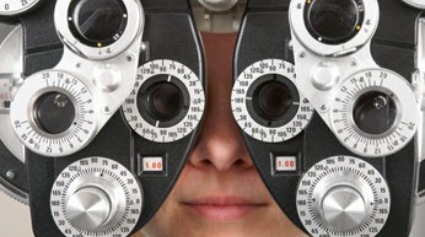
Importance of Yearly Eye Exams“I prefer my vision to be blurry!” “It bothers me how clear things are!” “I can see street signs from too far away!”... said no one ever. We at Sugar House Vision don’t hear those complaints from our patients and are pretty confident that you haven’t either. Don’t be that person who bumps into things and says their vision is fine. So, what’s the big deal about coming to see us for yearly eye exams? First off, for those of you who have vision insurance and don’t think anything is wrong with your eyes or vision, you might as well not watch that money you paid go down the drain. If you come for a visit, you may be surprised to find out that your vision has in fact deteriorated a little. A mild prescription could help improve night driving, or a bump in your reading prescription could help you read from your phone better. Let your insurance help put money towards your exam and eyewear. Annual eye exams aren’t important just to update your glasses or contact prescriptions. There are also eye conditions and diseases that you may have but for which you are asymptomatic. An annual eye exam could help with early detection of conditions that need to be monitored to ensure optimal ocular and systemic health. Changes in the eyes from diabetes or hypertension could also be found. Freckles, retinal holes, retinal degenerative conditions and more can all go without diagnosis unless it is detected with an eye exam. College age patients might experience eye strain from increased computer and near work. Update those glasses with an anti-reflective coating on the lenses, and maybe computer lenses might help relax those overworked eyes. Come in and see us this year for an eye exam and we’ll commit to helping you see your best and make sure your eyes are healthy. We’ll blow air in your eyes to check the eye pressure, then we'll see which is better, one or two, and update your prescription, and finally we’ll blind you with very bright lights to check your eye health! We hope to see you soon! 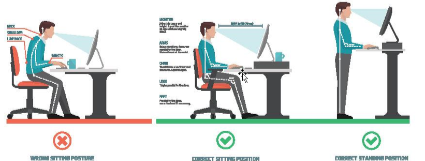
Computer Vision SyndromeMaybe you’ve heard of acanthamoeba, maybe you haven’t. However, once you know someone who has had it, you won’t forget it. Phones, tablets, computers and TV’s take up a lot of our time each day, and on average it is continually increasing. Research shows that adults spend roughly four hours a day on mobile devices and up to 12 hours per day in total screen time. With this significant amount of daily usage many symptoms can develop, which stems from the following four main categories: 1. Refractive (glasses/contacts prescription) 2. Binocular vision (coordination of both eyes working together) 3. Ocular and systemic health (eye and general health) 4. Ergonomic (comfort of work environment) Visually Related Symptoms ● Eyestrain ● Headaches ● Blurred vision ● Double vision ● Sleepiness ● Difficulty concentrating on reading material ● Loss of comprehension over time ● A pulling sensation around the eyes ● Movement of the print Take breaks frequently while working for an extended period of time on the computer/phone/tablet to help reduce the symptoms you feel from prolonged near work. A good general rule is the 20/20 rule, which is, after 20 minutes of screen time look at something over 20 feet away for a minute or longer. In addition to this, try to blink more frequently and lubricate your eyes periodically with non-preservative artificial tears to reduce symptoms related to dryness. Maintain good posture and ergonomics. Finally, we recommend yearly eye exams to ensure the eyes are healthy and the correct glasses prescription is being used. Anti-reflective coating on spectacle lenses can also help reduce the amount of glare and reflection from screens. Blue blocker lenses can limit harmful light that is emitted from our screens. If you are experiencing any symptoms possibly related to computer work, we at Sugar House Vision will do the best we can to help you get back to comfortably using your electronic devices and video displays.
For more information visit the American Optometric Association website at:
https://www.aoa.org/patients-and-public/caring-for-your-vision/protecting-your-vision/computer-vision-syndrome/suggestions-for-computer-vision-syndrome-sufferers 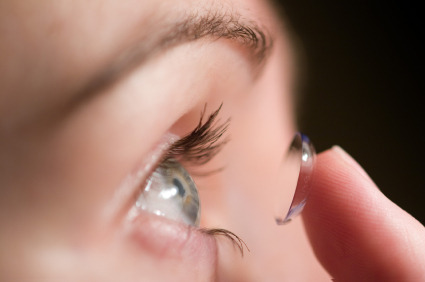
Beware of AcanthamoebaMaybe you’ve heard of acanthamoeba, maybe you haven’t. However, once you know someone who has had it, you won’t forget it.
Acanthamoeba keratitis is a corneal infection caused by the amoeba acanthamoeba. In developed countries it is strongly associated with contact lenses and water. For example, cleaning your contacts with tap water or wearing your contacts while in hot tubs, swimming pools, while showering etc., increases your chances of contracting the infection. Although acanthamoeba keratitis is rare, it can cause serious damage to the cornea leading to permanent vision loss and a possible corneal transplant. It is definitely an eye infection you don’t want to have.
By following these simple tips, your eyes will thank you for the extra protection. .jpg)
Healthy EyesUV damage can have harmful effects on the eyes. It can lead to sunburned corneas, the development of cataracts, age-related macular degeneration, external eye disease and more. A good pair of sunglasses that have sufficient UVA and UVB protection is important! Sunglasses without UV protection is actually harmful to the eyes. They dilate the pupil since they provide a darker environment surrounding the eyes, thus letting more light and UV in and potentially causing even more damage. Blue-blocker lenses may also provide eye health benefits while working a lot on the computer or other electronic devices Remember what your mom told you? “Eat your vegetables.” For eye health focus more on those foods that are rich in antioxidants and the protective pigments (carotenoids) found in the eye, which are lutein and zeaxanthin. High concentrations of lutein can be found in green leafy veggies, like kale and spinach. Other good sources of these carotenoids are kiwi, squash, red and orange peppers, peas, brussel sprouts, zucchini/squash, collard greens, broccoli, corn, and more. Overall good general health is beneficial for eye health. Regular exercise and eating healthy can help lower the risk of developing diabetes and hypertension, diseases which may lead to permanent vision loss or even blindness. Smoking can have harmful effects on the eyes as well. Finally, one more important part of maintaining good eye health is yearly eye exams. At each visit the prescription will be tested to provide optimal clarity of vision. Also, the eye pressure and the internal/external structures are evaluated to ensure your eyes are healthy. We look forward to seeing you each year and are grateful you are a part of Sugar House Vision! 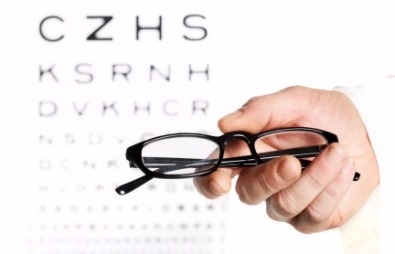
USE YOUR FLEX DOLLARS, AND SCHEDULE YOUR ANNUAL EYE EXAMINATION WITH SUGAR HOUSE VISION TODAYThe leaves have turned, and started to fall from the trees. Cool autumn air has arrived, and snow isn't far away. As our kids are settling in to their new school year, we think about gathering with family and friends for holidays at the end of the year. Often the year's end is one of the busiest times of the year for many of us as we plan gatherings, trips and vacations, and wrapping up another year at the office. With all the distraction, it's easy to forget to use our FSA money before it disappears at the end of the year! We'd like to remind you to be sure to check your HSA and Flex accounts - as well as your vision insurance plans - and stop in to see us before the end of 2017. We suggest checking your benefits now, and not waiting until the end of December, as most doctor's offices will be extremely busy the entire month. Appointments can be difficult or impossible to schedule in time to utilize your benefits if you wait! Our optometrists are available for comprehensive eye examinations 6 days a week, and now is a perfect time to update your prescription. Flex dollars can be used in our office for much more than just eye examinations and insurance co-payments. You can also use your dollars for glasses, contact lenses and cleaning solutions, sunglasses, and yes, even ski goggles. Again we urge you not to wait until December to use your benefits! Nothing is more frustrating than waiting till the very last minute, and not being able to get in when you need to most. We look forward to hearing from you, and helping you maximize your benefits before they disappear at the end of the year. Call, email, or stop by the office and we'll get you in right away. As always, we wouldn't be here without you, and we are very thankful you are a part of our Sugar House Vision family. |